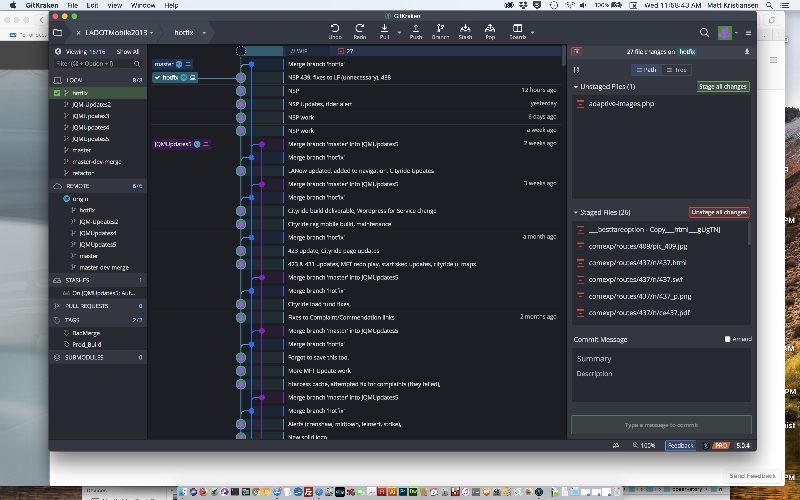

Enabling this option auto-converts CRLF line endings into LF when adding a file to index, and vice versa when checking out code onto your file system. Adjusting this setting will change tocrlf in your. AutoCRLF (Windows Only)įor Windows users, GitKraken Client will respect the tocrlf setting in the global. git directory, to maintain compatibility with Git for Windows. core.longpaths only applies to the files in the working directory, not in the.

Adjusting this setting will change core.longpaths in your. Longpaths (Windows Only)įor Windows users, GitKraken Client will respect the core.longpaths setting in the global. This option will also remember what tabs you have open for each profile. This will remember open tabs when you quit GitKraken Client. Lower counts may help improve performance, and the minimum value is 500 commits. Set the max number of commits GitKraken Client will show in the graph. This setting may cause performance issues with large repositories. Use Custom Terminal CommandĮnables the option to specify a custom command to open a terminal window.įor example, to set up GitKraken Client to open Powershell 7, use the command start "" "C:Program FilesPowerShell7pwsh.exe" -noexit -command "cd %d" Show All Commits in GraphĮnabling this option will force GitKraken Client to always show all commits in repo. Set your preferred terminal from this preference option for this action. You may open the current repo folder in terminal by navigating to File > Open Terminal or use the keyboard shortcuts opt + T (Mac) / alt + T (Windows + Linux). If turned off, these before and after files will not be automatically deleted. You may open a repo in your preferred external editor program using the Command Palette. There is where you may set your preferred external diff tool. This is where you may set your preferred external merge tool. Set the default name when initializing a new repo. Removes any remote-tracking references that no longer exist on the remote. If you’re experiencing issues with performance, consider setting your auto-fetch value to 0 and restarting the application. Setting the value to 0 minutes will disable auto-fetch. This value must be between 0 and 60 minutes, and it will fetch all visible remotes for the repository. Set the number of minutes between auto-fetches. It is used when, for example, you have a file and a branch with the same name.Note: the Organization section is only availibe to users who have a Pro or Enterprise license. The - with git checkout is a way to instruct Git what follows checkout to treat as a file, not a branch. It updates the files in the working directory to match the version stored in that branch, instructing Git to record all the new commits. The command works with the git branch command.

It operates on files, commits, and branches and allows switching between multiple features in just a single repository. The git checkout command switches branches or restores working tree files. Untracked files are those created within the working directory but are not yet added to the staging area. Unlike the other commands, this command operates on files already added to the Git staging area and runs on untracked files. The git clean is an undo command that completes other commands like git reset and git checkout.

To remove all the stashes, you should use git stash clear. You can delete the stash with git stash drop. It takes both staged and unstaged changes, saves them for further use, and then returns them from your working copy. The git stash command shelves changes made to your working copy so you can do another work, get back, and re-apply them. The staging area allows collecting all changes to get a clean commit. The next commit will transfer all items from the staging area into your repository. The changes within the staging area are part of the next commit. Staging the file will place the file into the staging area. The staging area (index) is a container where Git gathers all changes which will be part of the next commit.Įditing a versioned file on the local machine, will be recognized by Git as a modified file and be called as unstaged. Git reset -hard Staged and Unstaged Changes


 0 kommentar(er)
0 kommentar(er)
